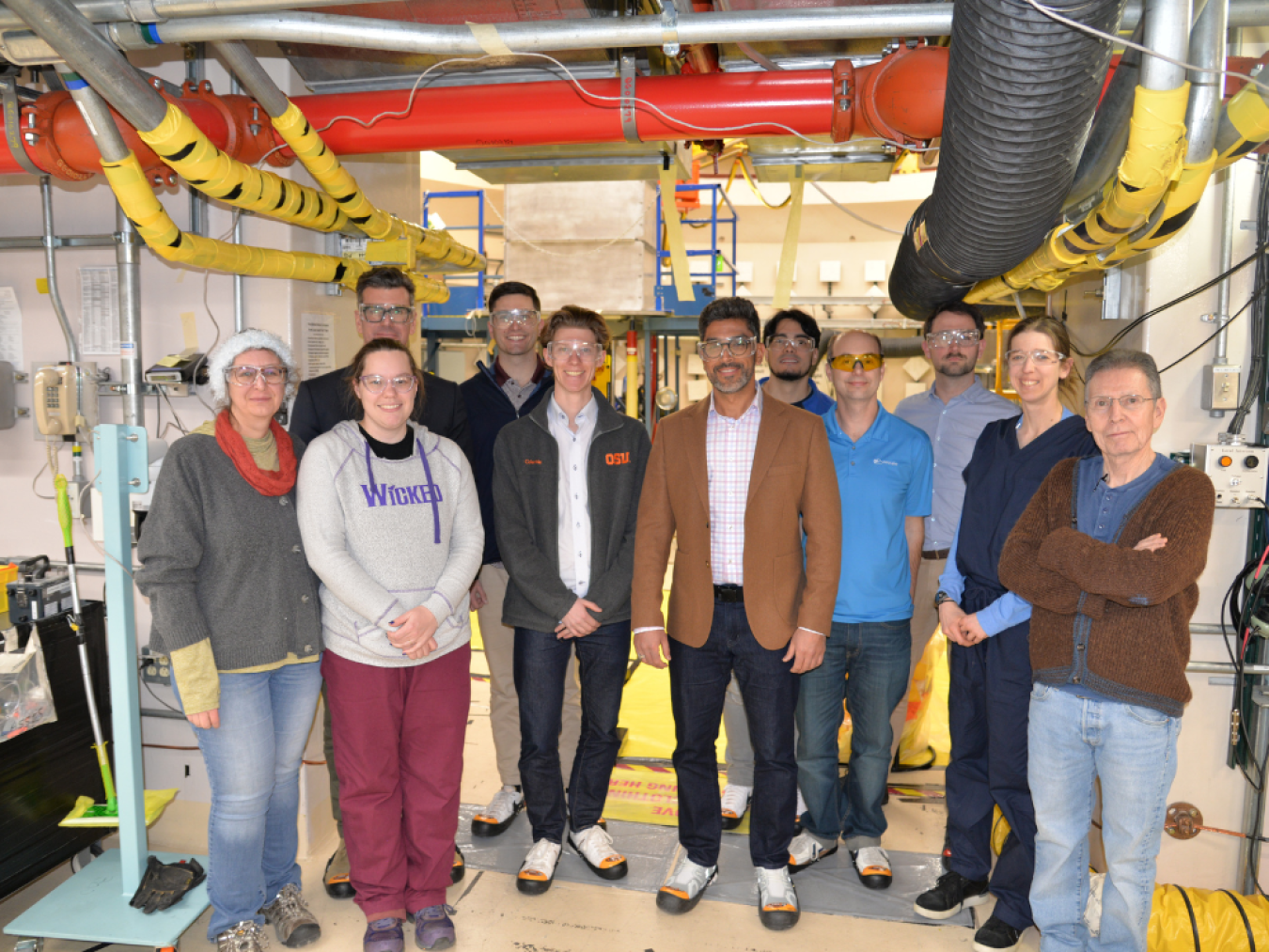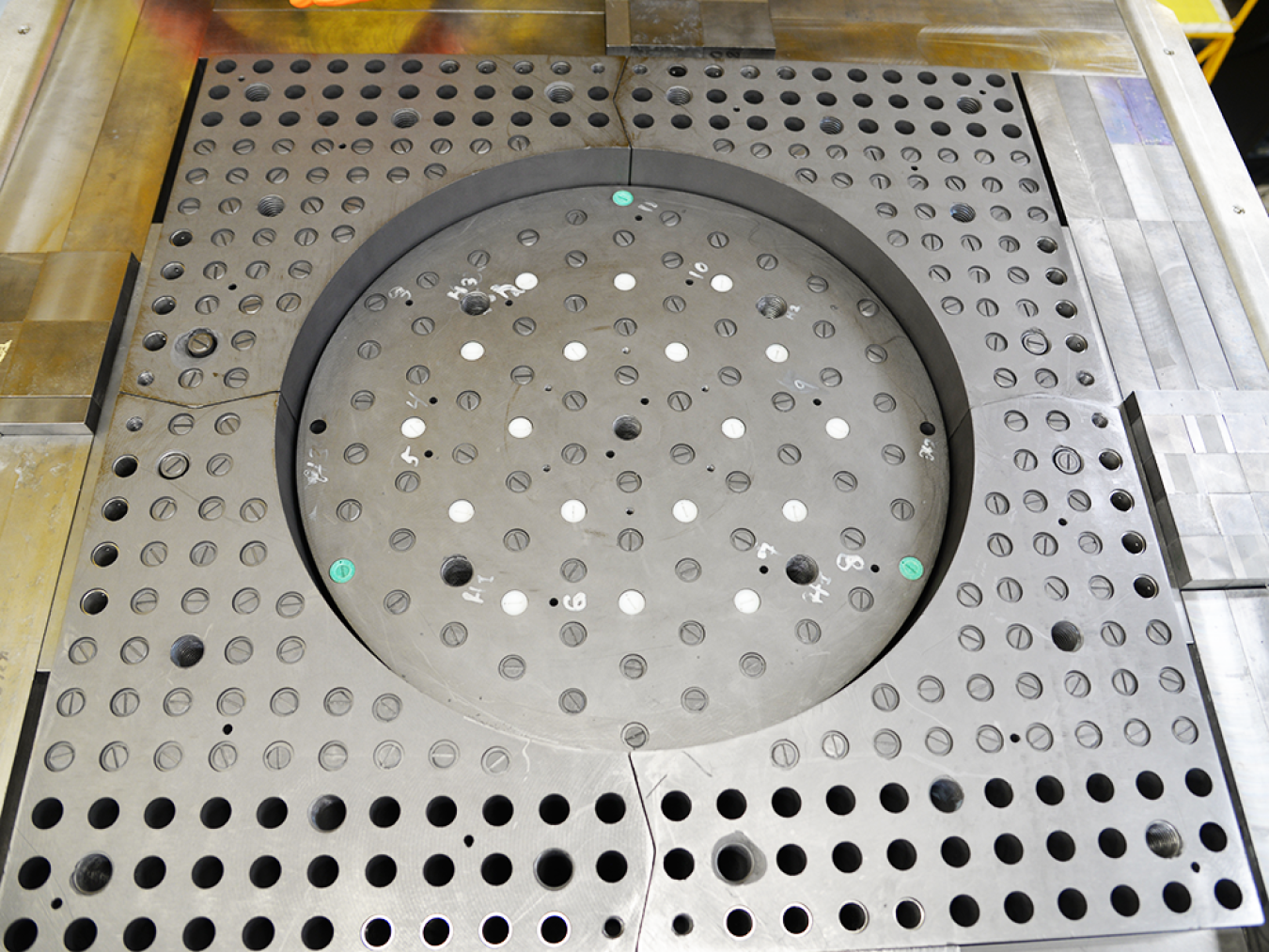Los Alamos National Laboratory wraps up its first set of criticality experiments designed specifically for the transportation of TRISO fuels.
April 21, 2025Los Alamos National Laboratory recently performed a series of first-of-a-kind criticality experiments that will provide data to support the transportation of high-assay, low-enriched uranium (HALEU)-based fuel.
The experiment is part of a larger effort by the U.S. Department of Energy and the Nuclear Regulatory Commission to develop safety data related to the use, storage, and transportation of HALEU.
Benchmarking Transportation Scenarios
Lab researchers began by collaborating with Kairos Power to identify data needs for improved nuclear fuel cycle efficiencies and safety in the transportation of HALEU-based TRISO fuel.
The experiment, known as “THETA”, was performed at the National Criticality Experiments Research Center (NCERC) using the recently demonstrated Deimos advanced reactor testbed.
Over the course of three weeks, researchers performed a series of experiments to simulate various transportation scenarios — including the intensity of neutron radiation on the fuel.

The testbed was modified using stainless steel to represent fuel shipping containers and polyethylene to simulate water infiltration scenarios and its impact on neutron moderation.
Researchers also used borated polyethylene to evaluate the effectiveness of neutron absorbers—potential components in future transportation designs.
"This is the first time the Deimos testbed has been used to test transportation scenarios," said Florie Knauf, Acting Deputy Assistant Secretary for the Nuclear Fuel Cycle. "The data collected from the experiment will help address key gaps related to the transportation of HALEU TRISO fuel."
The Work Continues
DOE is supporting 15 coordinated projects to generate publicly available data and criticality benchmarks related to the use, storage, and transportation of HALEU fuels.
The project teams span six national laboratories and include partnerships with six universities and multiple industry partners – forming a collaborative ecosystem that is working towards closing data gaps in the fuel cycle.
“Making reactor technologies a commercial reality demands data-driven research & development that serves both innovators and regulators,” said the National Technical Director William Wieselquist.
The publicly available data from these projects will enable efficient future design and safety reviews and help the nuclear industry develop new and novel solutions to improve the safety and design of their applications.
The DOE/NRC Criticality Safety for Commercial-Scale HALEU for Fuel Cycle and Transportation project is performed in collaboration between the Office of Nuclear Energy, the National Nuclear Security Administration’s Nuclear Criticality Safety Program, the Office of Science Nuclear Physics U.S. Nuclear Data Program, and the Nuclear Regulatory Commission.



